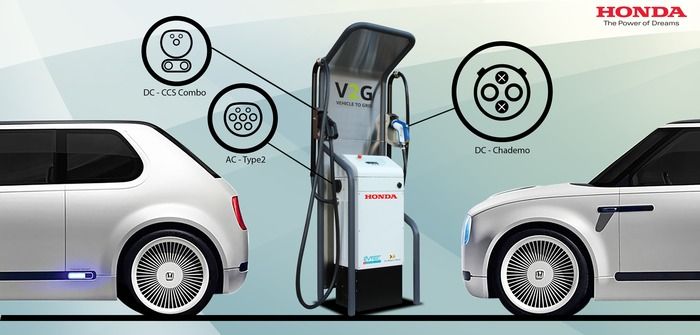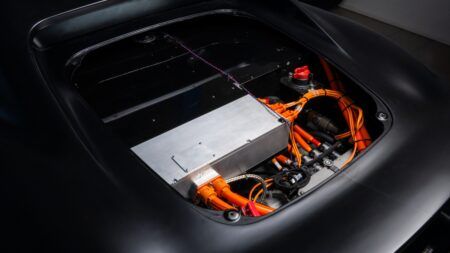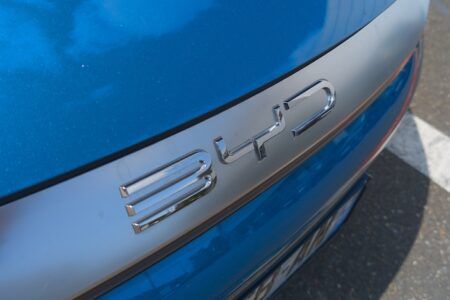Honda, in collaboration with EVTEC and The Mobility House, has developed and installed new bidirectional hardware at its European R&D center, as the company continues to work toward a zero-emissions society. The new technology means that the auto maker will now be able to return energy as well as draw energy from the grid.
Developed in Offenbach, Germany, as a testbed for potential products that will be available to future private households, the new technology incorporates renewable energy generation and ensures the ability to test the integration of EV batteries and renewable energy sources as well as helping to balance demand and store energy more efficiently across the facility.
Through bidirectional energy transfer, electricity can be drawn from the grid or photovoltaic solar panels, and is used to charge EVs plugged in to the system. While an EV is plugged in, the energy held in its battery can be transferred back to help stabilize the grid at times of short or surplus supply.
The installation in Germany follows the debut of the OEM’s domestic Honda Power Manager Concept at the 2017 Frankfurt Motor Show, which previewed a fully integrated energy transfer system that takes power from the grid and can return stored energy from EV batteries thanks to the company’s vehicle-to-grid technology. This latest site installation applies the same principles but on a larger scale.
“With the installation of the latest bidirectional charging technology at our R&D site in Germany, we are adding the next technology to our Smart Company project, which will further enhance our research activity in the field of zero-emission society and future mobility,” said Jörg Böttcher, vice president at Honda R&D Europe.





